|
It is a mystery why former President Donald Trump kept hundreds of classified documents and other government records at his Mar-a-Lago club. It is no mystery why the government wanted those documents returned. It has become clear in recent weeks from the release of previously sealed court documents, that the FBI was fully justified in retrieving those documents. Most Americans were unaware of government efforts to retrieve documents from Trump until August 8, 2022, when the FBI executed a search at Mar-a-Lago. During the search the FBI retrieved more than 100 classified records, some of which are so sensitive that few people in government have the security clearance to view them. The FBI’s search was not a partisan attack on the former president. It was not an attempt to discredit him and his allies ahead of the mid-term elections. Trump has called the FBI’s search at Mar-a-Lago an unprovoked “raid”, and totally unnecessary because he and his attorneys had been cooperative with the FBI and Department of Justice (DOJ) every step of the way. Don’t believe this nonsense. The National Archives and Records Administration (NARA) and the DOJ had been attempting to retrieve Presidential records and classified government documents, unlawfully held by Trump, for well over a year. Trump’s refusal to hand over the documents prompted the DOJ to secure a subpoena to search Mar-a-Lago and retrieve the documents. A lot of what the public knows about the ongoing investigation into Trump’s mishandling of government documents comes from the publication on August 26, 2022 of the affidavit used to obtain the warrant to search Mar-a-Lago. Nearly half of this 38- page affidavit was redacted to protect sensitive information and witnesses involved in the ongoing investigation. But there is still a lot that is known that should give any fair-minded American reason for concern. Why This Matters:
Time-Line of On-Going Investigation: May 6, 2021: After determining that it was missing about two dozen boxes of documents from Trump’s presidency, the NARA requested their return from Trump. The effort was stonewalled by the Trump team for months. December 2021: A Trump representative informed the NARA that 12 boxes of records had been found at Mar-a-Lago and could now be retrieved. January 18, 2022: Agents from the NARA picked up 15 boxes of Presidential records from Mar-a-Lago. It would later be revealed that 14 of the boxes contained classified documents. Over 700 pages of classified documents were found, including 25 documents marked “TOP SECRET”. February 9, 2022: Based upon the fact that classified materials had been potentially mishandled and improperly stored at Mar-a-Lago, the NARA’s Office of the Inspector General referred the matter to the DOJ. Soon after, the FBI opened a criminal investigation into the matter. April 12, 2022: The NARA informed Trump of its intention to provide the documents recovered from Mar-a-Lago to the FBI. To appease Trump’s attorneys, the documents were not provided to the FBI until May 12, 2022. May 11, 2022: The DOJ issued a subpoena for additional records. June 3, 2022: In response to the subpoena, a Trump attorney handed over more documents to three FBI agents and a DOJ attorney at Mar-a-Lago. Of the 38 documents handed over, 16 were marked “SECRET”, and 17 were marked “TOP SECRET”. No explanation was given for why these documents had not been previously turned over to the NARA. The FBI agents were told that all the White House records had been stored in a single room. Trump’s attorney gave the agents a signed letter certifying that a “diligent search” had been completed and that no government documents remained. June 8, 2022: The DOJ sent a letter to Trump’s attorney requesting that “all the boxes that were moved from the White House to Mar-a-Lago be preserved in that room in their current condition until further notice.” August 5, 2022: The DOJ filed an application for a search and seizure warrant for Mar-a-Lago, citing “probable cause” that additional Presidential records and records containing classified information remained in various locations at the club. Federal Judge Bruce Reinhart approved the application that day. August 8, 2022: The FBI executed the search at Mar-a-Lago and seized 36 items of evidence, including more than 100 classified records. The evidence was found in the storage room as well as in Trump’s office. It would latter be learned that some of the documents were so sensitive that even FBI counterintelligence agents and DOJ attorneys required additional security clearances before they could review them. Trump and his allies called the search a “weaponization” of the justice system, and soon after the FBI reported a surge in threats against its agents. August 26, 2022: Upon the order of Judge Reinhart, a redacted version of the affidavit used to obtain the search warrant for Mar-a-Lago was released. The affidavit revealed the DOJ’s reasoning for requesting the search warrant. According to the affidavit there was “probable cause to believe that evidence of obstruction will be found” at Mar-a-Lago, suggesting that there were efforts underway to impede the recovery of government documents. The affidavit listed three criminal laws that may have been violated as the basis for the investigation. The federal laws citied were the Espionage Act, obstruction under section 1519 of the Sarbanes-Oxley Act, and the willful retention of national security and other records that rightfully belonged to the NARA. The affidavit also revealed that the government had interviewed a significant number of civilian witnesses who had information pertaining to the movement of documents to and within Mar-a-Lago, and knowledge of Trump’s post-presidency actions. September 5, 2022: District Judge Aileen M. Cannon announced that she will grant Trump’s request to appoint a “special master” to examine the documents seized at Mar-a-Lago. The role of the special master will be to identify any material that might be protected by attorney-client or executive privilege. This move prevents the DOJ from further review of the materials in question and using them in the ongoing investigation, until the review by the special master is complete. The Office of the Director of National Intelligence may still continue to review the material to make an assessment of the potential damage that may have resulted from the manner in which the documents were transported and stored. September 6, 2022: The Washington Post reported that some documents seized at Mar-a-Lago detailed top-secret U.S. operations and nuclear capabilities of some foreign nations. This level of intelligence is usually restricted to the President, some cabinet secretaries, and near-cabinet level positions with the highest security clearance. September 8, 2022: The DOJ threatens to file an appeal with the 11th Circuit Court of Appeals if Judge Cannon doesn’t restore their access to the documents seized at Mar-a-Lago. The documents seized at Mar-a-Lago and Trump’s culpability is an ongoing story and will be played out over the months ahead. Even if a special master is not appointed, I think that the DOJ will take a cautious approach to the investigation. Trump is an incendiary character and the mid-term elections are less than 60 days away. The last thing the DOJ wants, and the country needs, is for any of its actions to influence the upcoming elections in any way. It appears as if the most sensitive documents in Trumps possession have been recovered, and there will be ample time to build a case and issue indictments if the evidence justifies it. The FBI was fully justified in searching Mar-a-Lago and retrieving Presidential documents and classified materials stored there. Donald Trump had several months to turn these records over to the NARA, but he didn’t. This was not a partisan attack, but a legal process precipitated by his own actions. The search at Mar-a-Lago would never have taken place if he had simply followed the law and returned all of the documents that belonged to the NARA.
Even if Trump had declassified the documents, as he has claimed, they were still not legally his. This is no simple dispute over the storage of documents, as the Trump camp would like you to believe. It is criminality. If Donald Trump is a victim, he is a victim of his own ignorance and arrogance. His callous disregard for the rule of law has once again landed him in hot water, and I think this time he is going to get burned. Updated 9-16-22: On September 15, 2022 Judge Cannon appointed a former chief federal judge in New York, Raymond J. Dearie, to be the special master to review the documents seized at Mar-a-Lago. Cannon ruled that the special master should examine the documents with classified materials and give priority to them over the non-classified documents taken from Mar-a-Lago. The Judge has given the special master until November 30th of this year to complete the review, and has denied the use of the records by prosecutors until after the review. This is a good thing in my opinion. It will cool things down a bit and get us past the mid-term elections. I think that indictments will eventually result from this case, so it is important to get it right and not be perceived as in any way political. Updated 9/24/2022: On September 21, 2022 the U.S. Court of Appeals for the 11th Circuit in Atlanta sided with the DOJ to prevent the special master from evaluating the roughly 100 classified documents seized from Mar-a-Lago. This will allow the FBI to use the documents in its ongoing criminal investigation. Trump continues to claim that he declassified the documents before they left the White House. According to Trump, he can declassify material “even by thinking about it.” That would be a frightening prospect if true. What else can a president do simply by thinking about it, issue pardons or getting into a military confrontation? The Appeals Court was not moved by the Trump team’s argument that the documents had been declassified. They couldn’t produce any evidence to back up the claim. In any case, the issue of declassifying the documents is irrelevant. As the court stated, “the declassification argument is a red herring because declassifying an official document would not change its content or render it personal.” Now the special master can get on with the work of reviewing all of the non-classified material taken from Mar-a-Lago to determine if any may be covered by claims of attorney-client privilege or executive privilege. The special master has until the end of November to complete his work. Updated 6/8/2023: Today the special counsel investigating Donald Trump’s handling of classified documents that he brought to Mar-a-Lago has handed down seven indictments against the former president. Trump has been summoned to appear at the Federal Courthouse in Miami on Tuesday at 3 PM to answer to these charges. We will not know the full extent of the charges until then. But they will be related to violations of the Espionage Act, making false statements and obstruction of justice. Those opposed to Donald Trump will gloat in triumph, and those who support him will call this an outrageous witch-hunt and an illegal use of the Department of Justice to bring him down. There is nothing to celebrate here. This is not good for the country, and we need to remember that Donald Trump has the presumption of innocence until proven guilty. He deserves his day in court. Donald Trump and his allies will assert that Mike Pence and Joe Biden did the same thing by keeping classified documents in their personal possession after they left office. But the differences couldn’t be starker. When it was discovered that classified documents had been discovered in the possession of former Vice President Mike Pence and President Joe Biden, the FBI was notified and given full access to locations where any and all documents could be stored. There was no attempt to prevent the FBI from retrieving the documents. Donald Trump misled the FBI and prevented it from obtaining government documents that he had in his possession for well over a year. This forced the FBI’s hand and led to the raid on Mar-a-Lago last year. This is the first federal indictment ever brought against a former president. Stay tuned. If you enjoy reading this type of commentary please subscribe to my blog and tell a friend. You will receive an email notification when new blogs are posted. The email will come from the site’s email: armchairamerican1776 @gmail.com. Thanks, Armchair American
2 Comments
Donald Trump’s rein of terror on the Republican Party continues unabated. Of the ten Republicans who voted to impeach Trump over his involvement in the January 6th Capitol riot, only two have survived to go on to the general election in November. Representative Liz Cheney of Wyoming is his latest victim. The fact that Liz Cheney lost her seat in the House of Representatives to a Trump-backed candidate is no surprise to anyone. Cheney is one of Trump’s most outspoken critics in the Republican Party, and is the vice-chair of the Congressional subcommittee investigating January 6th. Denying the results of the 2020 presidential election and downplaying the events at the Capitol on January 6, 2021, are the only political ideologies that matter in the Trump Party. I want to thank Liz Cheney, for being an American first and a Republican second. She sacrificed her House seat by standing up for truth, democracy, and the Constitution. That took courage, a rare commodity in politics today. She has shown that a “principled politician” is not an oxymoron. Liz Cheney demonstrated that patriotism does not mean blind obedience to a political party or a political leader. Rather, it is taking a firm stand against a political onslaught in defense of the rule of law and the principles that this country was founded on. I hope that she continues to stand proud while others in her party call her disloyal, unpatriotic, or un-American. What is un-American is being punished for speaking truth to power, questioning authority, and standing on your principles. Liz Cheney is down, but not out. This week she announced the creation of a new political action committee, “The Great Task”. According to a Cheney spokesperson, the committee will “educate the American people about the ongoing threat to our Republic, and to mobilize a unified effort to oppose any Donald Trump campaign for President”. Cheney has said that she is considering a run for president in 2024, and this would be the platform to launch her presidential run. Whatever she chooses to do, I am confident that she will continue to lead with integrity and courage.
This country needs more politicians like Liz Cheney. For the sake of the Republican Party, and indeed the country, I hope that she continues to be politically engaged, if for no other reason, to help dispel the falsehoods emanating from the Republican Party. Someday the Republican Party will wake up from its self-induced dystopian nightmare and find Donald Trump nowhere to be seen. But Liz Cheney will still be standing. If you enjoy reading this type of commentary please subscribe to my blog and tell a friend. You will receive an email notification when new blogs are posted. The email will come from the site’s email: armchairamerican1776 @gmail.com. Thanks, Armchair American  Approximately one-third of Americans, including 70% of Republicans, believe that Joe Biden won the presidency due to voter fraud. I didn’t vote for Donald Trump, so I have little credibility telling someone who did what to think. But a group of Republican staffers and officials with staunch conservative credentials has just published the report “Lost, Not Stolen: The Conservative Case that Trump Lost and Biden Won the 2020 Presidential Election”, https://lostnotstolen.org/wp-content/uploads/2022/07/Lost-Not-Stolen-The-Conservative-Case-that-Trump-Lost-and-Biden-Won-the-2020-Presidential-Election-July-2022.pdf. The authors of the report examined every claim of fraud and misconduct claimed by former President Donald Trump and his advocates. They examined the 64 legal challenges alleging 187 counts of voter fraud, irregularities and procedural deficiencies in the battle ground states of Arizona, Georgia, Michigan, Nevada, Wisconsin and Pennsylvania. According to the report, the Trump team failed to provide substantive evidence to win any of the legal challenges. The report also concluded that the post-election audits and reviews in each state failed to show any irregularities or fraud that would overturn the election results. There was no evidence of fraud in the 2020 Presidential election on the magnitude necessary to shift the result of the election in any state, let alone the entire nation. The report concluded that “there was no fraud that changed the outcome in even a single precinct. It is wrong, and bad for our country, for people to propagate baseless claims that President Biden’s election was not legitimate.” Why is this report important? For the same reason that the January 6 committee investigations are important. To get at the truth. If the American people don’t believe that our elections are free and fair, we will lose our democracy. I am under no illusions that the “Lost, Not Stolen” report or the January 6 committee investigations will change the minds of many Trump loyalists. This would take an unequivocal repudiation of Trump by the Republican Party, and perhaps abandonment by the right-wing media which propped him up. I don’t think that the Republican Party has the moral courage to take on Donald Trump, but some of his right-wing media friends are beginning to turn on him. In recent days, Rupert Murdoch’s New York Post wrote an editorial calling Donald Trump “unworthy to be the country’s chief executive again.” The conservative editorial board of the Wall Street Journal has also turned harshly critical of Donald Trump, calling his actions on January 6, 2021 an utter failure, and a violation of his oath of office. Now if Fox News, another Rupert Murdoch property, were to sour on Trump, I think that his political future would be over. For the Republican Party to remain viable, it needs to move beyond Donald Trump. It discredits the party when a majority of its members lack faith in the 2020 election results based on unsubstantiated claims of a stolen election. It also undermines democracy and the Constitution, which the Republicans claim to be defenders of. To restore its credibility, the Republican Party needs more Liz Cheneys and fewer Jim Jordans. As Nazi propaganda chief Joseph Goebbels was claimed to have said, “If you tell a big enough lie and keep repeating it, people will eventually come to believe it.” If you enjoy reading this type of commentary please subscribe to my blog and tell a friend. You will receive an email notification when new blogs are posted. The email will come from the site’s email: armchairamerican1776 @gmail.com.
Thanks, Armchair American Donald Trump is the only president in the history of the United States to have been impeached twice. The House of Representatives, with bipartisan support, impeached President Trump on January 13, 2021 for incitement of insurrection. The impeachment was precipitated by the January 6, 2021 Capitol riot by supporters of Donald Trump. This stain on Donald Trump’s presidential record is now part of U.S. history. Democratic House leadership decided to press the case against Donald Trump even further by forwarding the article of impeachment to the Senate for trial. The move to try Donald Trump in the Senate is not required by the Constitution. The impeachment stands whether or not the case moves to the Senate. Will the Senate impeachment trial of Donald Trump be a good thing for the country or will it backfire on the Democrats? Let’s take a look. President Trump is Impeached for a Second Time: On January 13, 2021 the House of Representatives voted to impeach President Donald Trump on the single article of “Incitement of Insurrection”. The vote was 232 to 197, with 10 Republicans joining all House Democrats in voting for impeachment. The text of the impeachment document (https://www.congress.gov/bill/117th-congress/house-resolution/24/text) contains the following reasons for impeachment: “…. the House of Representatives, and the Senate met at the United States Capitol for a Joint Session of Congress to count the votes of the Electoral College. In the months preceding the Joint Session, President Trump repeatedly issued false statements asserting that the Presidential election results were the product of widespread fraud and should not be accepted by the American people or certified by State or Federal officials. Shortly before the Joint Session commenced, President Trump addressed a crowd at the Ellipse in Washington, DC. There, he reiterated the false claims 'we won this election, and we won it by a landslide'. He also willfully made statements that, in context, encouraged-and foreseeably resulted in-lawless action at the Capitol, such as: 'if you don’t fight like hell you’re not going to have a country anymore'. Thus incited by President Trump, members of the crowd he had addressed, in an attempt to, among other objectives, interfere with the Joint Session’s solemn constitutional duty to certify the results of the 2020 Presidential election, unlawfully breached and vandalized the Capitol, injured and killed law enforcement personnel, menaced Members of Congress, the Vice President, and Congressional personnel, and engaged in other violent, deadly, destructive, and seditious acts”. The impeachment document further states that “President Trump’s conduct on January 6, 2021, followed his prior efforts to subvert and obstruct the certification of the results of the 2020 Presidential election. Those prior efforts included a phone call on January 2, 2021, during which President Trump urged the secretary of state of Georgia, Brad Raffensperger, to 'find' enough votes to overturn the Georgia Presidential election results and threatened Secretary Raffensperger if he failed to do so.” Most of us have viewed the television coverage and read the news reports, and pretty much concur with the reasoning behind the impeachment of Donald Trump. There is evidence that several militia groups had been planning to storm the Capitol even before Donald Trump’s speech of January 6, 2021. But no one can dispute that Donald Trump’s rhetoric about the “stolen election” was the impetus behind the Capitol riot. Even his political allies believe that he committed impeachable offenses. According to the New York Times, Senate Republican leader Mitch McConnell believes that President Trump committed impeachable offenses. House Republican leader Kevin McCarthy stated to House colleagues that President Trump was at least partially responsible for the Capitol riot. On to the Senate Trial: On January 25, 2021 House managers delivered the article of impeachment to the Senate, officially starting the trial process. Senate leadership agreed to delay the trial for a few weeks in order to give the former president time to prepare for the trial and to give the Senate time to continue the process of confirming President Biden’s cabinet nominees. On January 26, 2021 all Senators were sworn in as jurors for the upcoming trial. Senator Patrick Leahy of Vermont will be the presiding officer. The impeachment trial will begin on February 9, 2021 with oral arguments. It will take 2/3 of the Senators (67) to vote to convict Donald Trump. Assuming all 50 Democratic Senators vote to convict, it will take 17 Republican Senators to vote for conviction. Objections to the Senate Trial: New Senate leader Chuck Schumer (D-New York) claimed that “…healing and unity will only come if there is truth and accountability. And that is what this trial will provide”. But not all republicans are buying this argument. Many are saying that it will further divide the country, and the point is moot now that Donald Trump is no longer in office. Others, like Kentucky Senator Rand Paul, consider it unconstitutional to impeach a president who is already out of office. Even before the Senators were sworn in as jurors, Senator Paul put forth a motion to declare the impeachment trial unconstitutional. In the resulting vote, 45 Republicans, including Mitch McConnell, agreed with Senator Paul. But Senator Paul’s attempt to rule the impeachment trial unconstitutional failed, and it will proceed as scheduled. My Views on the Senate Impeachment Trial:
Politics as Usual: In recent days the Republican leadership in the House and Senate have concluded that, for better or worse, they need Donald Trump. In order to regain the House and Senate in the mid-term elections they will need those Republicans who are still loyal to Donald Trump, and there are millions. Senator Lindsey Graham stated bluntly this week, “We cannot take the Senate back without his help (Donald Trump’s). That’s just a fact”. It’s a sorry day in our democracy when the quest for power trump’s (no pun intended) justice, integrity, and democratic values. The Republican party would do the country a huge favor by convicting Donald Trump and then preventing him from ever running for high office again. But instead they have chosen to make a deal with the devil and they will have to live with the consequences. Sadly the country will have a difficult time unifying with Donald Trump’s polarizing presence. There is no doubt in my mind that Donald Trump threatened the integrity of our democratic system, interfered with the peaceful transition of power, and imperiled a coequal branch of government. In short, he committed impeachable offenses and the House of Representatives was correct in impeaching him. This second impeachment will forever be a stain on his legacy. However, I fear that delivering the article of impeachment to the Senate to initiate an impeachment trial will prove to be a mistake. If you enjoy reading this type of commentary please subscribe to my blog and tell a friend. You will receive an email notification when new blogs are posted. The email will come from the site’s email: armchairamerican1776 @gmail.com.
Thanks, Armchair American The President of the United States has nearly unlimited power to pardon or commute the sentences of those accused or convicted of federal crimes. This power is embedded in Article 2, Section 2 of the Constitution, which states that the president has the “power to grant reprieves and pardons for offenses against the United States, except in cases of Impeachment”. The framers of the Constitution thought that fear of impeachment, the court of public opinion, or the integrity of the person holding the highest office in the land, would keep any abuses in check. Unfortunately, this has proven not to be the case. The self-serving pardons granted by President Trump in the closing hours of his administration, demand that reforms be explored. Exercise of the Presidential Pardon: The Constitution provides no standards or guidelines on the use of the presidential pardon, and therefore it can be used for any reason, or no reason. Pardons were deemed necessary to address injustices, at a time when many crimes were punishable by death and haste was of the essence. As Alexander Hamilton argues in Federalist No. 74 (https://guides.loc.gov/federalist-papers/text-71-80), the purpose of the pardon power is to temper justice with mercy, and in order to facilitate reconciliation which is sometimes needed to restore the tranquility of the commonwealth. Examples of this include pardons granted by Abraham Lincoln and Andrew Johnson to Confederate Soldiers, and amnesty granted by Jimmy Carter to Vietnam-era draft evaders. An 1866 Supreme Court ruling affirmed that the presidential pardon “extends to every offence known to law, and may be exercised at anytime after its commission, either before legal proceedings are taken, or during their pendency, or after conviction and judgement”. This was how President Ford was able to grant Richard Nixon a full, free, and absolute pardon for all offenses against the United States even before he was charged with any. It is important to note that presidential pardons only exonerate federal crimes. It can not be used to pardon state or local offenses, and it cannot be used to overturn civil judgments. The president does not have the power to pardon defendants in an impeachment trial or anyone who has been impeached. The pardon may be granted even before legal proceedings have begun, but pardons may not be granted for crimes that have not yet been committed. Can Presidents Pardon Themselves? The Constitution does not explicitly prohibit it, and no president has tried. But as James Madison wrote, “no man is allowed to be a judge in his own case, because his interest would certainly bias his judgement, and, not improbably, corrupt his integrity”. This is a longstanding common-law principle, and many legal experts agree that a self-pardon would not stand up to judicial scrutiny. Richard Nixon may have sought to pardon himself if not for his Justice Department’s Office of Legal Counsel opinion that a president could not pardon himself. If a president attempted a self-pardon, the matter would most certainly end up in the Supreme Court. Office of the Pardon Attorney: The Office of the Pardon Attorney, within the Department of Justice (DOJ), was established approximately 125 years ago to assist the president in the exercise of executive clemency. Executive clemency may take several forms. These include full pardon, commutation of sentence, remission of fine or restitution, or reprieve. Requests for executive clemency are directed to the Pardon Attorney for review, investigation, and preparation of the DOJ’s recommendation to the president. The Office of the Pardon Attorney has established procedures and standards for considering pardon petitions ( https://www.justice.gov/pardon). But the president is not required to follow their recommendations and retains full pardon authority. In fact, President Trump has mostly bypassed the Office of the Pardon Attorney when considering pardon petitions. Instead, petitioners have approached the White House directly through advisor Jared Kushner, Chief of Staff Mark Meadows, White House Council Pat Cipollone, or the president himself. Pardons as Tools of Justice or Personal Gain? President Trump was not the first, and he certainly won’t be the last president to use the executive clemency system to his own advantage. Under Donald Trump, the executive clemency system has been dominated by inside access, and used to serve his personal goals and whims. Analysis by Harvard law professor Jack Goldsmith found that 86 of Donald Trump’s first 94 pardons were “aberrant”’; meaning that they circumvented the normal review process and benefitted celebrities, or people with political or family ties to the president (https://www.lawfareblog.com/trumps-circumvention-justice-department-clemency-process). In 2020, Donald Trump granted clemency to loyal associates Paul Manafort, George Papadopoulos, Michael Flynn, and Rodger Stone. Donald Trump also pardoned Jared Kushner’s father, a convicted criminal, as well as four Blackwater security guards convicted of murdering civilians in Iraq. These individuals were not wrongly convicted, showed little contrition or remorse for their crimes, and do not serve the public good by being pardoned. The pardon system was not established to foster cronyism and to subvert the rule of law. But this seems to be the case in these instances. The biggest abuse of the system is the large number of pardons issued in the final hours of a presidency, leaving little time for scrutiny. This is exemplified by Bill Clinton’s pardon of Marc Rich who was indicted for tax evasion and racketeering. Rich and his wife were large donors to Hilary Clinton’s Senate campaign and to the Clinton Library Foundation. The fact that Rich was a fugitive from law living overseas, did not prevent him from getting a “get out of jail free” card. On his final day in office, President Trump pardoned 74 people and commuted the sentences of 70 others. I’ll let you decide how many of these meet the Constitution’s intent of the pardon clause. Here is a full list of the 144 people receiving clemency: (https://www.nbcnews.com/politics/donald-trump/full-list-trump-s-last-minute-pardons-commuted-sentences-n1254806). Many of these last-minute pardons are rotten to the core, but perfectly legal. So, what can be done about it? Nothing, without some type of reform. Possible Reforms: If you assume, as Alexander Hamilton did, that all presidents would show “prudence and good sense” in the exercise of the pardon authority, then nothing needs to be done. But as recent history has shown, not all presidents are the principled gentlemen that the framers of the Constitution had envisioned. Here are a few suggestions for reforms that would better align the president’s pardon authority with how it was originally intended:
The president’s pardon authority was not intended to excuse injustice, but to do justice. The Constitution gives the president nearly unfettered authority to issue pardons. There is very little transparency in the process, and many of the most questionable pardons occur in a president’s final hours in office. It is time to reform the pardon system and restore it to the purpose for which it was intended. If you enjoy reading this type of commentary please subscribe to my blog and tell a friend. You will receive an email notification when new blogs are posted. The email will come from the site’s email: armchairamerican1776 @gmail.com. Thanks, Armchair American For all intents and purposes the 2020 presidential election is finally over. The Electoral College met on December 14th in all 50 states and the District of Columbia and cast their electoral votes. The Electoral College has spoken and the winner of the 2020 presidential election is (drum roll please), Joe Biden! It was a very contentious election, and President Trump and his allies have tried every legal maneuver possible to have the election results overturned. But the numbers don’t lie. Here is the election scorecard, which even the most hardened partisan cannot overlook: 2020 Presidential Election Score Card Votes/Challenges Trump Biden Popular Vote 74,223,753 (46.9%) 81,283,495 (51.4%) -------------------------------------------------------------------------------------------------- Recounts in Wisconsin and Georgia √ -------------------------------------------------------------------------------------------------- Lower Courts Lawsuits (50+) √ -------------------------------------------------------------------------------------------------- Supreme Court Rulings (2) √ -------------------------------------------------------------------------------------------------- Electoral College Votes 232 306 -------------------------------------------------------------------------------------------------- Winner √ ------------------------------------------------------------------------------------------------- Even before all of the votes from the November 3rd election were tallied, the President’s campaign and his allies, began filing over 50 lawsuits in various jurisdictions. The lawsuits contested the election outcome due to alleged fraud or voting irregularities. Some of these lawsuits are still pending, but the majority were thrown out or decided in Joe Biden’s favor due to lack of evidence. The first Supreme Court challenge, to reverse the election results in Pennsylvania, was denied due to lack of merit. The second Supreme Court challenge, filed by the Texan Attorney General, was denied due to lack of standing (he didn’t have the legal right to sue other states over their election laws). Much to the chagrin of President Trump, the separation of powers is still working. Here is a reference to all of the legal challenges: https://www.9and10news.com/2020/12/10/status-of-election-related-legal-challenges/. The partial recount in Wisconsin and the full hand recount in Georgia, both went in Joe Biden’s favor. On the floor of the Senate today, Leader Mitch McConnel acknowledged Joe Biden’s victory in the Electoral College. He went on to congratulate President-elect Biden and Vice President-elect Harris on their victory. On January 6, 2021 Congress will meet in joint session to count the electoral votes and declare the winner of the presidential election. For the sake of the country, let’s hope that Donald Trump and his millions of admirers accept the outcome of the election so that we can work together on the challenges ahead. If you enjoy reading this type of commentary please subscribe to my blog and tell a friend. You will receive an email notification when new blogs are posted. The email will come from the site’s email: armchairamerican1776 @gmail.com.
Thanks, Armchair American In 2016 Donald Trump ran for president as an outsider and disrupter. This helped him defeat Hilary Clinton, a Washington insider with over thirty years of baggage. According to exit polling during the 2016 presidential election, the most important quality identified by voters was that the candidate would bring change (https://cookpolitical.com/analysis/national/national-politics/what-do-voters-want-confrontation-or-compassion). What are voters looking for this time? What qualities do voters look for in a presidential candidate, and what role does leadership play? Leadership Qualities in a Good President: According to many historians, there are several leadership qualities found in good presidents (https://www.ushistory.org/gov/7e.asp). They include the following:
Leadership in Turbulent Times: We are certainly living through turbulent times. The coronavirus pandemic has killed or sickened millions of people, forced millions out of work, and placed a dark cloud over the economy. There are ongoing protests over racial injustice, and a widening political divide. But history shows us that America has lived through much more difficult times that required great leadership to see us through. No president was faced with a more difficult challenge than Abraham Lincoln who lead the country through a devastating civil war. Franklin Roosevelt came to power during the Great Depression and then lead the country through World War II. At moments of great challenge these presidents were guided by a sense of moral purpose, sought to heal divisions, and had to bring the country together to summon a common purpose. Doris Kearns Goodwin explores presidential leadership in her book “Leadership: In Turbulent Times”. She discusses the following traits that served several presidents well during turbulent times:
Why We Vote the Way We Do: Research into why voters choose one presidential candidate over another has been going on for many years. It should be no surprise that the single most powerful predictor of a person’s vote choice is his/her political party affiliation (https://pprg.stanford.edu/wp-content/uploads/10-The-psychology-of-voting.pdf). Party affiliation is usually based upon shared values and preferences on a handful of key policy issues. The second predictor of who a voter will choose is based on the voter’s perception of the candidate’s personality traits (intelligence, knowledge, trustworthiness, and ability to be a strong leader). Since I am not affiliated with a political party, I lean towards this camp. This will be the 12th presidential election that I voted in. In the previous eleven, I voted for the Democratic candidate four times, the Republican five times, and a third-party candidate twice. Trump vs Biden: Make no mistake, this election is a referendum on Donald Trump. Joe Biden is a secondary character in this drama. Will voters continue to respond to President Trump’s seemingly never-ending chaos and drama? Or will they be motivated by a more steady and stable form of leadership? According to a recent NBC/Wall Street Journal poll, 64% of Republicans like Trump’s willingness to confront and challenge the establishment in government and to shake up business as usual. In contrast, 70% of Democrats prefer a leader, like Joe Biden, who will bring competence and compassion to the way the government operates. Why I Don’t Believe Donald Trump Will Win Reelection: The president has not positioned himself to unify the country at a time when it is much needed. This country needs a beacon of hope due to the pandemic, economic uncertainty, and ongoing protests and anger over racial injustice. Donald Trump has used these issues to divide the country rather than to unite it. He has made no appeal to American optimism and aspirations. According to a recent Yahoo News/YouGov poll, most registered voters believe that in the last four years bipartisanship, race relations, and crime have worsened. Sixty-two percent of registered voters list Donald Trump’s management of COVID-19 as a major failure. COVID cases are surging across the country, and the stock market is sensing a weakening economy as a result. The president has no prescription for either COVID-19 or the weakening economy. In fact, the president has not articulated any vision or policy proposals for the next four years. The American people really don’t know what Donald Trump believes. He will do and say whatever he thinks will get him reelected. Donald Trump has shown scorn for science, puts politics before people, and aligns himself with the worst elements of our society. He doesn’t know the damage he does by not denouncing QAnon and right-wing militias. I’m sure that he doesn’t really believe in what these groups espouse, just like he really doesn’t hold the views of the religious right. But they are part of his base, and that is all that matters. Why I Didn’t Vote for Donald Trump: I didn’t vote for Donald Trump in 2016 because he had never held elected office before, he had no experience in governing, he had little foreign policy experience, and he lacked the temperament and character to lead this country. Donald Trump has now been president for the better part of four years (seems like forty), and my instincts were correct. Here is a list of my top reasons for not voting for Donald Trump in 2020 (but I could have listed many more):
According to taped conversations with Bob Woodward, the president knew the dangers of the coronavirus, but chose to down play them. It is obvious that the president didn’t want to hurt his reelection chances and gambled with peoples’ lives. This was the deal breaker for me.
Americans are resilient, and this country will survive and thrive regardless of the outcome of the 2020 presidential election. Due to the millions of mail-in ballots, we may not know the winner for many days after the election. We all need to be patient and let the process work itself out. If Donald Trump wins the election, he will not tear up the Constitution and declare himself “President for Life”. If Joe Biden wins, he will not confiscate your guns, impound your gasoline powered vehicles, or turn the suburbs into public housing projects ruled by violent leftists. I have never seen the American electorate more energized by an election, and this is encouraging. If our “experiment” in self-government is to last, more citizens need to be involved. The electorate needs to champion candidates, for all levels of government, who will truly represent the people, and not just their political party. Yes, we are living through turbulent times, but we have been here before. This country is at an inflection point. It’s time we take stock, learn from the lessons of the past, and move forward with the courage and determination to make this representative democracy work for the vast majority of Americans.
If you enjoy reading this type of commentary please subscribe to my blog and tell a friend. You will receive an email notification when new blogs are posted. The email will come from the site’s email: [email protected]. Thanks On August 8, 2020 President Trump signed the “Memorandum on Deferring Payroll Tax Obligations in Light of the Ongoing COVID-19 Disaster”(https://www.whitehouse.gov/presidential-actions/memorandum-deferring-payroll-tax-obligations-light-ongoing-covid-19-disaster/). The memorandum directs the Secretary of the Treasury to “defer certain payroll tax obligations with respect to the American workers most in need”. What’s this memorandum all about, who benefits, and is it a good idea? Like an “Executive Order”, an “Executive Memorandum” has the full force of the law. To learn more about the difference between these two executive actions go to (https://guides.loc.gov/executive-orders/order-proclamation-memorandum). What Does the Latest Presidential Memorandum Do: It allows employers to stop withholding Social Security taxes from employees’ paychecks for the rest of 2020. This would increase take home pay by 6.2%. Employers are still required to pay the 6.2% Social Security tax that they are responsible for. The program takes effect September 1, 2020 and ends December 31, 2020. Who is Eligible: Any employee whose wages or compensation is less than $4,000 during any bi-weekly pay period on a pretax basis, or an equivalent amount if not paid bi-weekly. If an employee’s pay fluctuates, they may participate during any pay period when the maximum is not exceeded. Do the Deferred Taxes Need to be Repaid: Yes, all the Social Security taxes will need to be repaid in 2021. The president's memorandum directs the Secretary of the Treasury to explore ways to eliminate the obligation to pay these taxes back. When President Trump signed the memorandum, he said that he will forgive these taxes and make permanent cuts to the payroll tax if re-elected. But Congress would need to pass legislation to permanently reduce the payroll tax or forgive any taxes not paid under this program. In order to clarify some of the questions about the Presidential Memorandum, the IRS issued guidance under “Notice 2020-65” (https://www.irs.gov/pub/irs-drop/n-20-65.pdf). The notice provides the following clarifications:
Is the Payroll Tax Deferral a Good Thing: In my opinion no. There are lots of concerns that I have with the program. Here are a few:
I’m not the only one against the president’s payroll deferral. On August 18, 2020 the U.S. Chamber of Commerce, National Retail Federation, National Restaurant Association, and nearly 30 other business groups sent a letter to Treasury Secretary Mnuchin, voicing their concerns. Chief among them were the serious hardships it could place on employees who would receive a large tax bill in 2021. The groups were also concerned about the administrative and legal obligations imposed on employers. These business groups indicated that they would recommend that their members continue withholding payroll taxes as before and not participate in the program. If President Trump is able to enact a permanent payroll tax holiday after January 1, 2021, as he suggested, it would have serious consequences on the longevity of the Social Security Trust Fund. According to the chief actuary of the Social Security Administration, a permanent payroll tax holiday would deplete the Trust Fund’s reserves by the middle of 2023 (https://www.ssa.gov/oact/solvency/VanHollenSandersWydenSchumer_20200824.pdf). With all of the downsides to the president’s payroll deferral program, why would he even bother? It’s all political! The Congress is in a stalemate over additional pandemic relief spending, and the president wants to show that he is a man of action. The signing ceremony for the Presidential Memorandum was a great photo-op and it brings a lot of news coverage. News coverage of the president being “presidential” is about the best campaign coverage there is, and it doesn’t cost anything. Between now and election day, take any new policy statement or initiative with a grain of salt. We are in the middle of silly season.
If you enjoy reading this type of commentary please subscribe to my blog and tell a friend. You will receive an email notification when new blogs are posted. The email will come from the site’s email: [email protected]. Thanks, Armchair American This is part 2 of a “Tale of Two Conventions”. The last blog focused on the Democratic Convention and this blog will focus on the Republican National Convention. Both conventions are over and the sprint to the November 3rd election has begun. After watching the two conventions I wondered whether the two parties were talking about the same America. The portrait of America painted by each candidate and their place in it, could not have been more different. It can best be described by that keen chronicler of the human condition Charles Dickens, “It was best of times, it was the worst of times, it was the age of wisdom, it was the age of foolishness, it was the epoch of belief, it was the epoch of incredulity, it was the season of light, it was the season of darkness, it was the spring of hope, it was the winter of despair, we had everything before us, we had nothing before us, we were all going direct to Heaven, we were all going direct the other way…..” The Republican National Committee (RNC) did not issue a new political platform for 2020 but adopted the 2016 platform, which enthusiastically throws its support behind President Trump and his policies. This pretty much confirms that the RNC is taking a backseat to the politics of Donald Trump. This is no longer the party of Ronald Reagan, and certainly not the party my father would recognize. The RNC provides the vehicle and the stage, but make no mistake, this is now the party of Donald Trump. The convention was produced and paid for by the RNC, but it was written and directed by Donald Trump. Republican National Convention: The convention took place on August 24-27. Due to the coronavirus pandemic, plans for an in-person, large scale convention were called off just a few weeks ago. The convention was originally scheduled to be held at the Spectrum Center in Charlotte, North Carolina, but was cancelled in early June due to strict public health guidelines. The location was then moved to Jacksonville, Florida, but was subsequently cancelled due to spikes in the coronavirus. The convention ended up taking place remotely from the Andrew W. Mellon Auditorium in Washington D.C. and a few other locations. The official business of the convention took place at the Charlotte Convention Center in North Carolina. The overall theme of the convention was “Honoring the Great American Story”. Going into the convention, Donald Trump trailed Joe Biden in the national polls by about 9 points. He has received poor marks for his handling of the coronavirus pandemic and his handling of racial injustice. If the president can change the narrative away from the coronavirus to crime and civil unrest, his polls should benefit coming out of the convention. Trump’s Goals for the Convention:
Highlights from Day One: The theme for the day was “Land of Promise”. With 336 delegates gathered in Charlotte, North Carolina, Mike Pence was unanimously nominated as Donald Trump’s running mate. During the roll call Donald Trump was officially named the Republican Party’s nominee for president. In contrast to the Democrat’s “Roll Call Across America”, the RNC roll call was a procession dominated by older white men in front of a white background emblazoned with #RNC2020. The president broke with tradition and appeared live at the convention center to give his acceptance speech. This was Donald’s party after all, and he made appearances all four days. The speech set the tone for the rest of the convention. The president painted a dark picture of what America would look like under a Biden administration; claimed his coronavirus efforts saved millions of lives; claimed that he resided over the most successful economy in the history of the country, and blasted mail-in-ballots. The president would appear two more times during day one in prerecorded videos from the White House. The first was a conversation with front line health care workers, and the second was an appearance with several former hostages whose releases had been negotiated by his administration. As was the case on all four nights, there was very little social distancing and no one wore a mask. Most of the speeches during the evening were delivered from the Andrew W. Mellon Auditorium in Washington, D.C. The speeches coalesced around four major themes: the president is not a racist; the president did a great job handling the coronavirus pandemic; the president created the greatest economy in the history of the country and can do it again; the Democratic Party will take the country down the path of socialism and allow our cities and suburbs to be overrun by mobs of rioting and looting criminals. The speakers of note included Jim Jordan, Herschel Walker, Mark and Patricia McCloskey, Kimberly Guilfoyle, Steve Scalise, Nikki Haley, Donald Trump Jr., and Tim Scott. The McCloskeys are a white couple who live in an exclusive suburb of St. Louis. They received a lot of national attention by pointing guns at passing Black Lives Matter protestors. They were vilified by the left and proclaimed heroes by the right for protecting their property. They made an appearance at the convention via video to warn America that if Joe Biden is elected president the suburbs will be become a lawless wasteland. Donald Trump Jr. and his girlfriend Kimberly Guilfoyle both gave angry speeches along the same lines. Donald Trump Jr. said that “Beijing Biden” would cozy up to China, bring in more illegals, repeal the tax cuts, and allow anarchists to flood the streets. Guilfoyle was even more strident in her condemnation of Biden. It was an over the top performance during which she warned that democrats “want to enslave you to the weak, dependent, liberal victim ideology, to the point that you will not recognize this country or yourself.” Donald Trump later called Guilfoyle to tell her it was the best speech that he had ever heard. You decide: https://www.youtube.com/watch?v=ErSd_YiRCAs . Nikki Haley, a former South Carolina governor and President Trump’s first UN ambassador, came across as poised and professional. Being a woman of Indian descent, she pushed back against the claim that Donald Trump is racist. She even said that “America is not a racist country.” This defied logic, but the convention was all about defying logic. It was obvious to anyone paying attention that Nikki’s speech was little more than a kickoff to a 2024 presidential run. Probably the best speech of the night was given live by Senator Tim Scott of South Carolina. Scott is the only black Republican Senator and was a pleasant reprieve from the anger and doom and gloom heard all night. He used his own story to show how much racial progress the country has made. In the best line of the night Scott said, “Our family went from cotton to Congress in one lifetime.” Scott also pushed the case for school choice and warned against the democrats who would turn our country into a socialist utopia. Conspicuously absent from the convention was the last GOP president George W. Bush, and Senator Mitt Romney who ran against Obama in 2012. Highlights from Day Two: The theme for the day was “Land of Opportunity”. The White House played a prominent role as a backdrop for many of today’s proceedings. The day was full of Trump family members and the controversy over whether or not the Hatch Act had been violated. The Hatch Act prohibits federal employees from engaging in most political activity inside federal buildings or while on duty. The president and vice president are exempt from the civil provisions of the Hatch Act, but federal employees are not. Federal employees who helped stage certain political events witnessed on this day may be in violation. The following convention events may have violated the Hatch Act:
President Trump’s economic advisor Larry Kudlow led off the prime-time speeches, giving the president credit for the greatest economy in history. We have heard this claim often and it is simply not true. It all depends on how you measure the economy. GDP growth is a common measure, and there have been several instances in the post WWII era (including during the Obama administration) when GDP growth was higher than during the Trump administration. True, the stock market achieved record highs during Trump’s term. But the stock market is not the economy, and 80% of stocks are owned by the 10% richest households in America. Cissie Graham, the granddaughter of Billy Graham, and Abby Johnson, a former Planned Parenthood employee gave voice to Donald Trump’s pro-life stance. Johnson claimed that Donald Trump was the most pro-life president ever. I guess that Ms. Johnson had forgotten that Trump was pro-choice before he decided to enter politics. Nicholas Sandmann delivered a very effective anti-media message from the Lincoln Memorial. Sandmann was a high school student falsely portrayed as the aggressor during a confrontation with a Native American activist last year during demonstrations near the Lincoln Memorial. Sandmann was wearing a “Make America Great Again” hat and was vilified on social media and in many main-stream news outlets. As a result, Sandmann and his fellow high school students received death threats, and their conservative High School received various threats of violence. After an investigation cleared the students, they filed defamation lawsuits against several news outlets. Several of the lawsuits are still pending, but the students have won multi- million dollar judgements against The Washington Post and CNN. The other notable speeches of the evening were given by Trump’s children Tiffany and Eric, and the first lady Melania Trump. It was interesting that neither Tiffany nor Eric (and Donald Jr. for that matter), attempted to the portray the president as a kind and loving father, or attempt to humanize him in any way. Tiffany used her speech to rail against the main-street media. Eric expounded on his father’s accomplishments and the dangers of a Biden presidency. Eric stated that “Biden has pledged to defund the police and take away our cherished Second Amendment”. This is a false claim. Melania Trump’s speech was notable for taking place live from the White House Rose Garden, which had recently been renovated for the occasion. To her credit, the first lady expressed thanks to the front-line workers who have risked their lives during the pandemic, and offered sympathy for those grieving the loss of loved ones to COVID-19. The speech came across as Melania’s reintroduction to the American people. Unlike the speeches of Jill Biden and other Biden family members, there was little attempt to soften Donald Trump the man, or to humanize him in any way. Highlights from Day Three: The theme for the day was “Land of Heroes”. Most of the speeches for day 3 were delivered form the Andrew W. Mellon Auditorium in Washington D.C. The night was capped off with a live speech by Vice President Pence delivered from Fort McHenry in Baltimore. There were lots of America flags present during every speech and the backdrop of Pence’s speech was a nod to the military and patriotism. Women’s suffrage was celebrated, and there was an effort to portray President Trump as a champion of women. Many women spoke in praise of Trump, including his daughter-in-law Lara Trump, Kelly Ann Conway, Kayleigh McEnany, Kristi Noem, Marsha Blackburn, Elise Stefanic, Joni Ernst, and Karen Pence. The women provided a softer tone than the previous days, but there was still the steady beat of doom and lawlessness under Democratic leadership. There was also the appeal to social conservatives with a clear pro-life message. The message was effectively delivered by Sister Didi Burn, who was a military physician before becoming a nun. She made a passionate plea for the dignity of all life, particularly the unborn. But she lost me when she claimed that Donald Trump was the most pro-life president, in all stages of life. I guess the Sister hadn’t received the memo on Trump’s prior pro-choice stance and his support of the death penalty. Madison Cawthorne delivered some of the most rational lines of the night. Cawthorne is the young Republican nominee in North Carolina’s 11th District. He urged politicians to do more listening and less talking. “To liberals I say, let’s have a conversation”, he said, and “to conservatives, let’s define what we support and win the argument in areas like healthcare and the environment.” Cawthorne is confined to a wheelchair as a result of an auto accident and finished his speech by rising to his feet with the aid of a walker. This young man is going places. The best speech of the night was delivered by Mike Pence, surrounded by American flags in front of a live audience. The backdrop of Fort McHenry was quite impressive. Pence gave an articulate rendering of the triumphs of the Trump administration and came across as the loyal and stoic number two. Pence was fairly moderate in his remarks but threw plenty of red meat to the base. According to Pence, we won’t be safe in Joe Biden’s America. "Biden is a cheerleader for communist China and a Trojan Horse for the radical left". It was a well delivered speech, written with rose-colored glasses, and absent any sense of what was really happening on the streets of America. You would never know that most pro sports weren’t taking place due to player boycotts and racial protests were intensifying due to new police shootings. At the end of the speech Pence was greeted on-stage by President Trump. You didn’t think the president could let Pence have all the lime-light? If there was any social distancing taking place, it all vanished when the audience rushed the fence-line to get closer to Trump and Pence. There were no face masks to be seen in this crowd. It certainly fit the narrative of the entire convention, that the pandemic was in the rear-view mirror. Highlights from Day Four: The theme of the final day of the Republican convention was “Land of Greatness”. All the speeches and film clips were a leadup to the day’s main event, President Trump’s speech. We heard from some of the president’s most ardent supporters, most of whom where men. These included Mitch McConnel, Dana White (President of UFC), Ben Carson, Rudy Giuliani, Tom Cotton, and several others. The tough on crime theme permeated the speeches, punctuated with a little criminal justice reform. The president’s daughter Ivanka delivered a speech live from the South Lawn of the White House. The speech was billed as the introductory speech for Donald Trump. But it was more like a checklist of Ivanka’s accomplishments and a rationalization of why her advisory position as first daughter should be elevated to a cabinet position. The president’s 70-minute speech was delivered live in front of 1,500 people on the South Lawn of the White House. It was an impressive scene, with the White House behind the president and the Washington Monument in the distance. I just hope that those 1,500 spectators got tested for the coronavirus after the speech. There was no social distancing and I could count on one hand the number of people wearing masks. Periodic shouts of “four more years” didn’t help matters. It had all the makings of a “super spreader” event. But the president got his live audience and the use of the White House as a prop for his reelection bid. The administration later claimed that the Hatch Act was not violated because the South Lawn was not inside a federal building. True, but campaign signs were everywhere and the “People’s House” was clearly used as a prop in a campaign rally. If not technically illegal, it certainly broke with tradition and blurred the lines between politics and government. The speech was too long and came across as a “State of the Union” speech. The speech was more notable for what it didn’t say than what it did say. There was no positive vision for the future, no real agenda for the second term, and little mention of how to tackle the coronavirus, get the economy back on track, or address the social injustices rocking the country. The speech was a laundry list of the president’s accomplishments and a summation of the things we had heard all week about why the country should fear Joe Biden and the radical left. The speech was delivered without much passion and the president’s energy level was low. I wonder if the speech was written by Kelly Ann Conway because it could have been titled “Alternative Facts”. The president tried to hammer home his administration’s successful efforts at combating COVID-19. According to the president “We developed, from scratch, the largest and most advanced testing system in the world”. He made the claim that the US “has among the lowest case fatality rates of any major country in the world”, and the US “has developed a wide array of effective treatments”. But even more startling was the statement that his administration focuses “on the science, the facts and the data” to handle the coronavirus pandemic. “If we listened to Joe, hundreds of thousands more Americans would have died”. You get the point. The president accused the democrats of rewriting history, but the speech tried to do exactly that. The president’s speech kept the fact checkers busy all night with his claims about the economy, “massively lowering drug costs”, pushing healthcare premiums “way down”, passing the Veterans Choice bill, and others. But my favorite claim of the night was the assertion by the president that he had done more for the African American community than any other president since Lincoln. I know that it’s difficult when you don’t know what you don’t know. I guess the president forgot (or didn’t know) about the 1964 Civil Rights Act and the 1965 Voting Rights Act signed into law by Lyndon Johnson. If Joe Biden could do everything that Trump claimed, he would not be our next president, he would be our first king! Here’s just a few of the things that Biden would do as president: He would eliminate borders, remove charter schools, take away your guns, eliminate the suburbs, release 400,000 criminals onto the streets, destroy American jobs and American greatness. Scary stuff! The president looked relieved when the speech was finally over; I know I was. Not to be outshined by her husband, Melania Trump wore a bright lime green dress. It was hard to miss her in the crowd and got her a lot of attention at the convention and on the internet. That green dress provided a perfect green-screen for memes and Photoshop shenanigans. She walked right into that one, but she is the fashion expert afterall. he best part of the night was the spectacular fireworks display over the national mall which illuminated the Washington Monument and Lincoln Memorial. You just had to know that the Republican’s fireworks display would dwarf that of the Democrats. Did Trump Achieve his Convention Goals?
Final thought: On Thursday of this week Donald Trump called on North Carolina voters to vote twice. Once by mail and once in person, to test the system. Why not make it simpler Mr. President, just bring in the Russians as poll monitors. If you enjoy reading this type of commentary please subscribe to my blog and tell a friend. You will receive an email notification when new blogs are posted. The email will come from the site’s email: [email protected]. Thanks, Armchair American |
AuthorThe Armchair American. Archives
November 2024
Categories
All
|








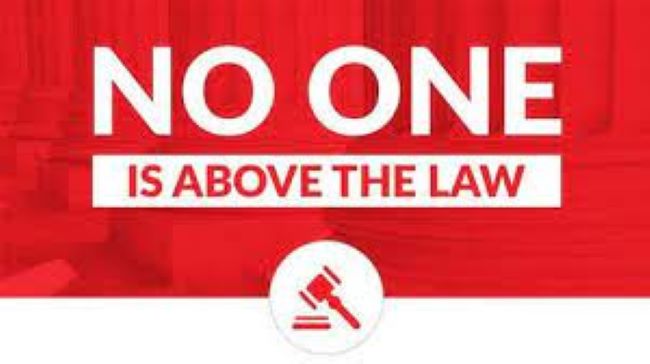
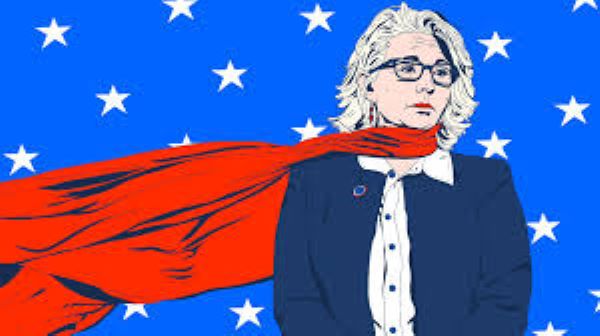




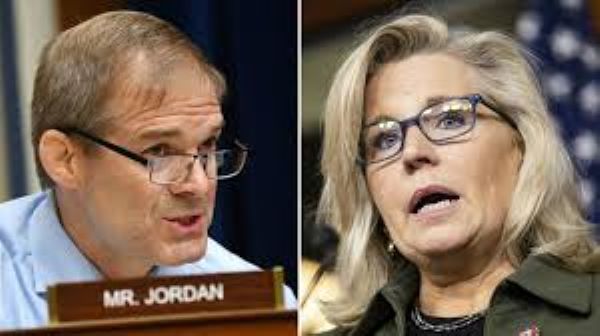
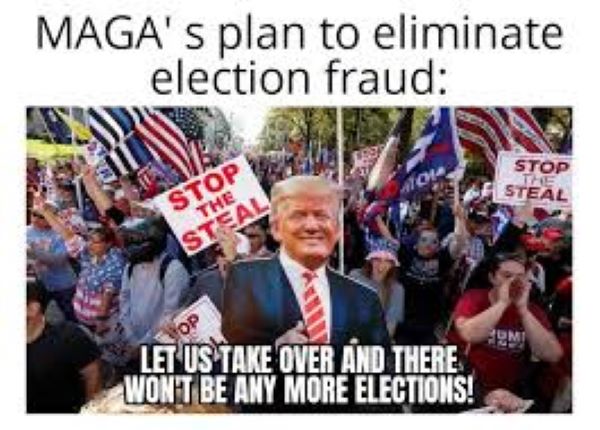


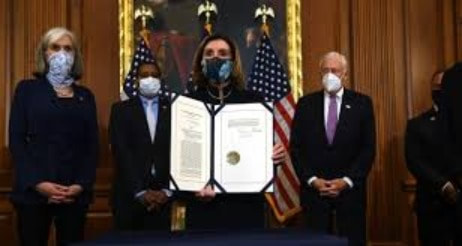
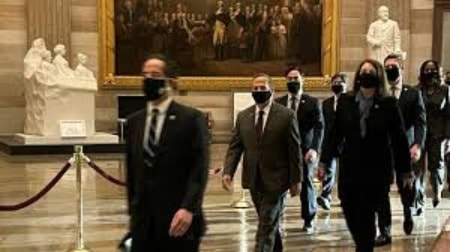
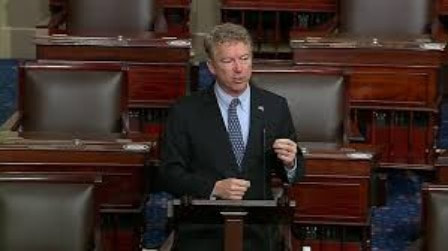
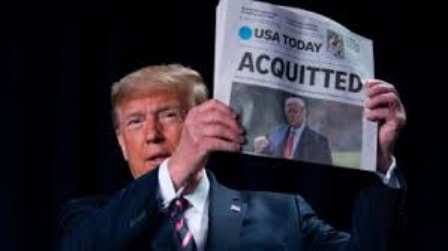





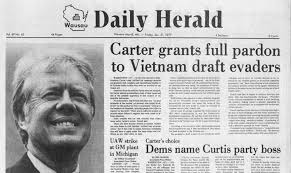
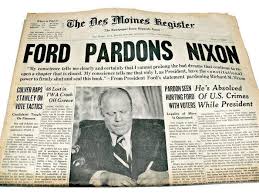
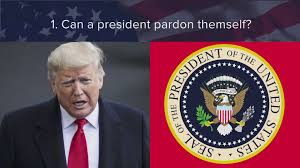
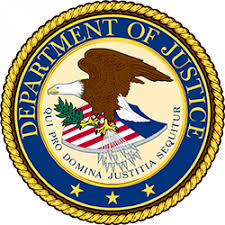



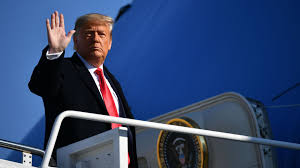
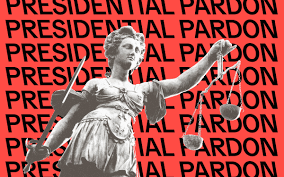
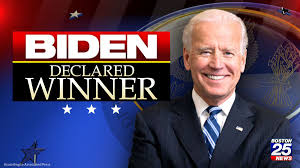

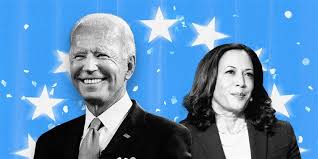

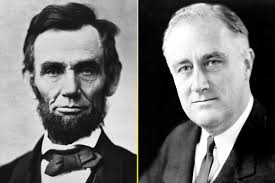

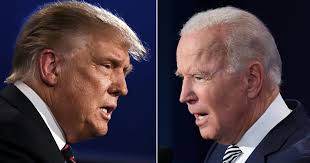

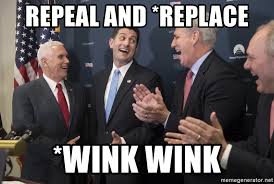
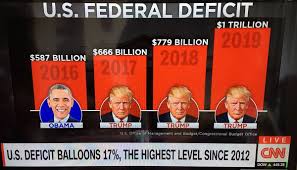


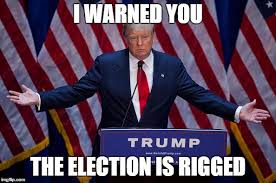

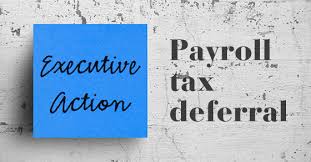





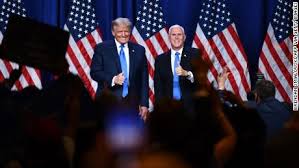
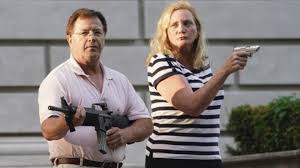



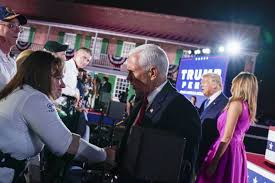
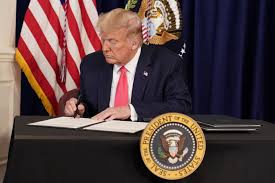
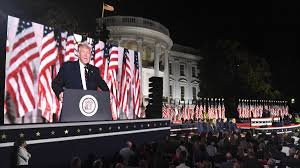

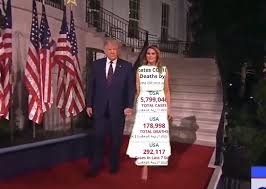



 RSS Feed
RSS Feed